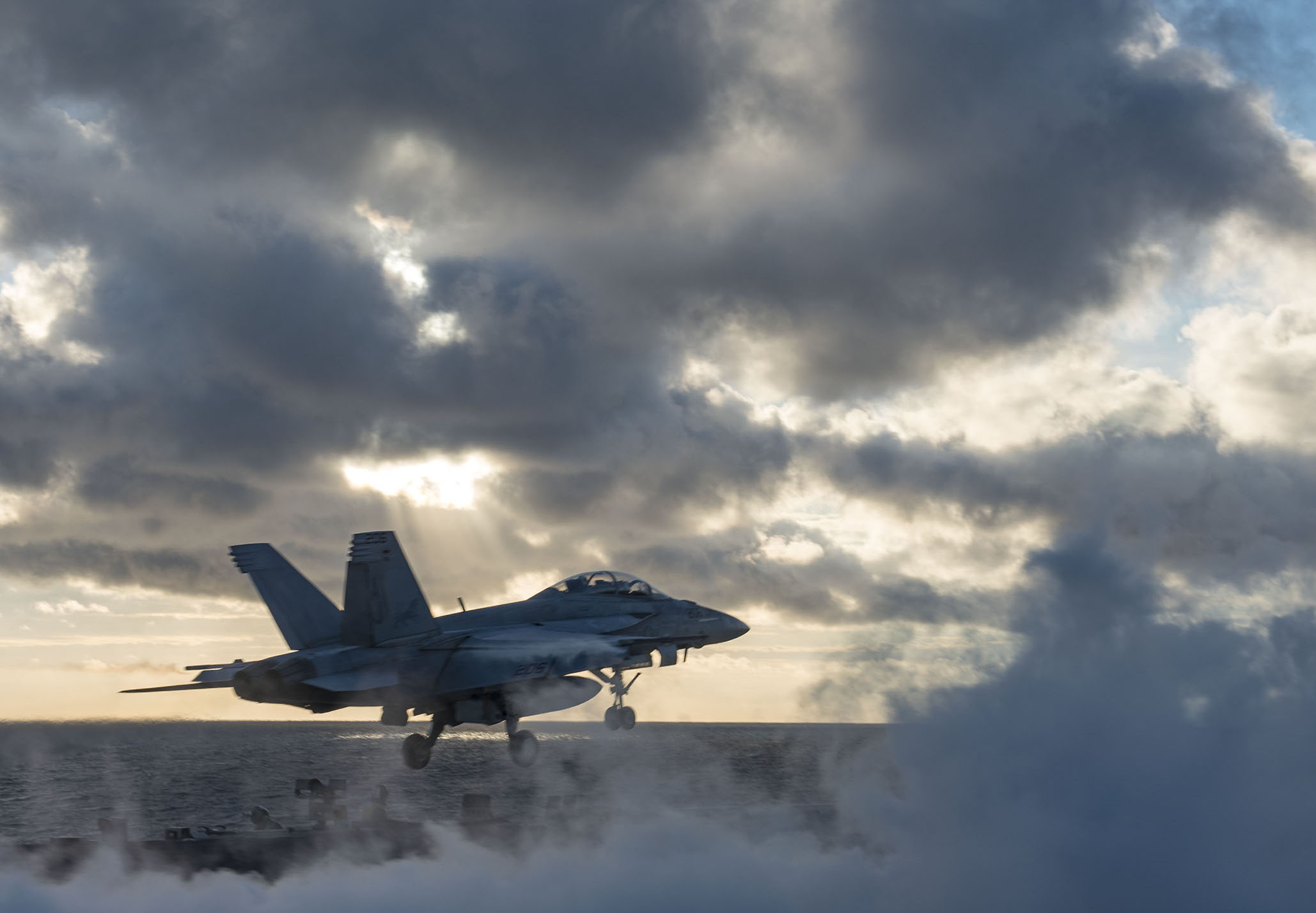
Robust demand for Boeing’s fighter and surveillance aircraft and increases in the company’s service business maintaining both military and commercial aircraft were cited by corporate leaders with helping boost second quarter revenues.
Boeing reported revenues of $24.3 billion for the first three months of 2018, compared to revenues of $23 billion a year ago. Profits for the quarter were $2.2 billion, compared to $1.7 billion a year ago, Dennis Muilenburg, chief executive of Boeing, told Wall Street analysts during a conference call Wednesday.
Boeing is focusing on business lines expected to provide more predictability to revenues, such as strong demand for military and commercial aircraft. Muilenburg also hinted the company will be more selective with how it develops future technologies, by doing what he called, “strategically phasing research activity.”
Strong defense and services revenues through the first half of 2018 spurred Muilenburg to announce Boeing bumped up by $1 billion the company’s 2018 revenue estimate. Boeing now expects to finish the year with revenues of between $97 billion and $99 billion. Previously the stated 2018 revenue goal was between $96 billion and $98 billion.
“The increase in revenue reflects the growth from key international fighter awards and higher weapons revenue,” Greg Smith, the company’s chief financial officer told analysts.
A $1.5 billion contract to build 28 F/A-18E/F Super Hornet fighters for Kuwait, 18 F/A-18E/F Super Hornet fighters for the U.S. Navy, and three P-8 Poseidon aircraft for the U.S. Navy were among the defense contracts Muilenburg said are driving strong revenue growth.
Looking ahead, a multi-year $4.2 billion contract modification to build 58 V-22 Osprey aircraft for the Navy (four are being sent to Japan), the recent selection of the Poseidon to be New Zealand’s maritime patrol aircraft mean defense sector revenues will remain strong, Muilenburg said.
Long-term, the National Defense Authorization Act budget supports buying more Super Hornets through multi-year contracts, Muilenburg said.
At the same time, Boeing just started upgrading older F/A-18E/F aircraft through the Service Life Modification Program, which is converting older Super Hornets into the new Block III configuration. Boeing expects follow-on contracts could be awarded during the next decade.





